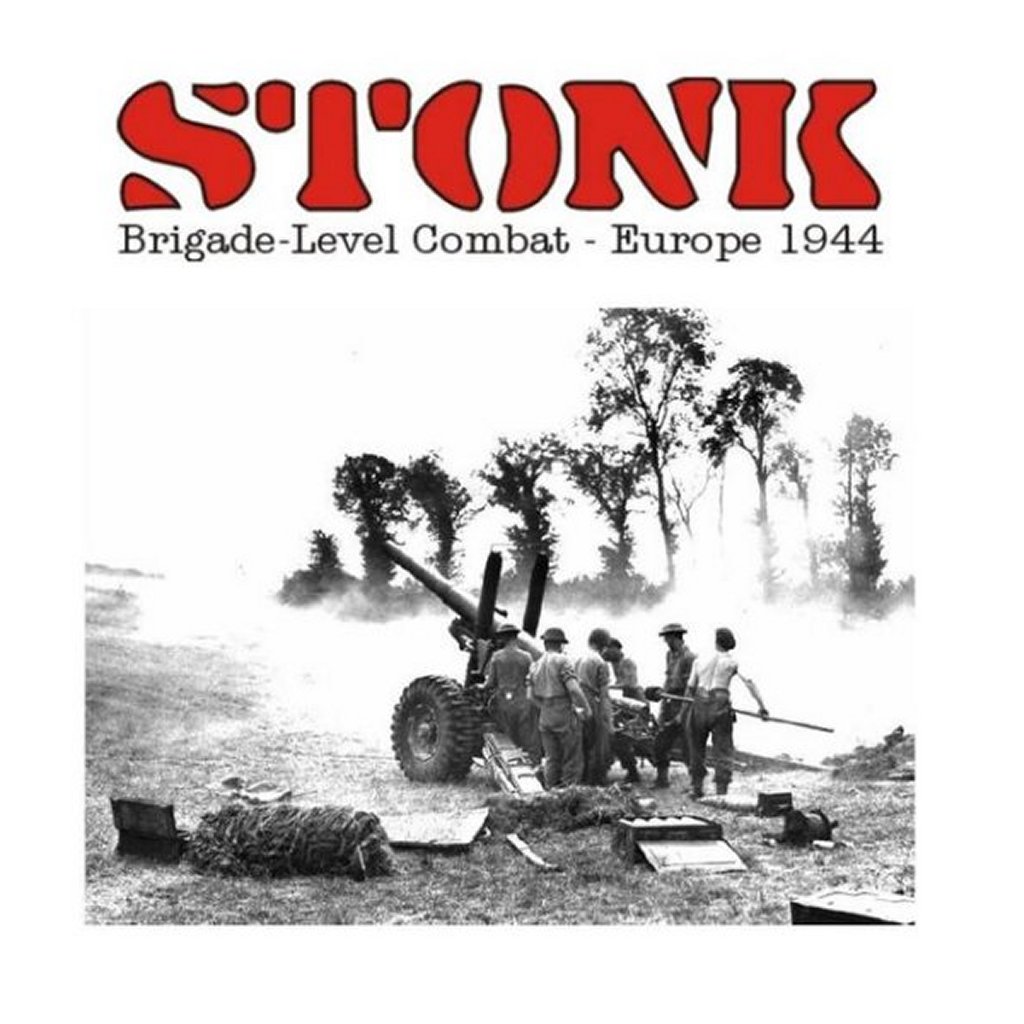Stonk Brigade-Level Operations NW Europe 1944-45. Stonk Rules is a set of wargame rules intended to simulate actions between about one brigade equivalent a side. Supported by divisional or even corps troops where they would have been available.
This therefore represents a departure from the normal pattern of wargame rules for models. For this period, which have hitherto tended to be set at company level, and entirely unsuitable to simulate larger actions. In STONK the details of tank versus tank actions (which feature so importantly in other sets) have been greatly simplified. This is for two reasons. First to shift the emphasis onto other types of combat at this level. And secondly because pure tank versus tank battles very unrepresentative of the type of action most often fought at this level of operations in this theatre of warfare.
platoon or troop
To this end, the smallest separately represented unit is the platoon or troop. This is shown on the table top by a cardboard base of the appropriate size, on which a suitable number of 1/300 scale models mounted. The exact number per base can be varied to meet your own taste and financial resources.
The area of the base represents the normal area the unit would occupy when deployed for combat. Whilst this might impart a degree of inflexibility to the smaller units. The system of using these bases is regarded as a necessity to create a higher speed of play, and the ‘feel’ of thinking and planning at brigade level. It is important that players think of these bases as indivisible. And concentrate on the actions of companies and battalions as a whole. This change in scale of operations does require some special effort to get used to. There are inevitably a number of tables in the rules. And to get used to the application and interpretation of each one takes a little effort. Despite this, it is worth it, and the tables are designed to try and make play as rapid and interesting as possible.
start small with these rules
It is probably best to start small with these rules. (as indeed it is with any new rules) and try out actions involving just one battalion. It is important to continually bear in mind the ground scale used with these rules. 1 inch to 100 metres is the recommended scale, and this is very small. If the models used were to this scale. Then a tank would have to be about 0.75mm long, so the size of the models has very little relevance to the action. Players should be careful not to be misled by this. On the subject of scale; in 1944, a British armoured division could. And often would, attack on a frontage of one mile or less. This would be represented by a frontage of some 16 inches on the table top.
Of course, this would only constitute the leading brigade battlegroup, but within the terms of our rules. This means the whole wargame could fought out over a frontage of less than two feet! This gives you some idea of the possible concentration of effort that could expected. And to warn you against the old wargaming trap of spreading your models to fill the table space available. This will produce ridiculous and ahistorical results.
umpire in these rules
A great deal of emphasis placed upon the umpire in these rules. And he should have a good knowledge of the period first, and the rules second. The rules can used without an umpire. But most of the refinements, and a lot of the ‘feel’ will lost.
Contrary to popular practice, there is no points system, since the forces used must be historical, and placed within a realistic military context from the period. The best criterion for choosing your forces is whether they actually fought in the NW Europe Campaign and a short search through one of the many excellent books on the period will settle the question.
There not written with that intention, but simply as a set of guidelines for keen WWII wargamers to fight brigade battles of the type typical in NW Europe. The interpretation of the rules therefore not fixed, but dependant upon the tactical situation you are attempting to simulate.
Players and umpires
Players and umpires should continually measure the results of their games with their own knowledge of the period. Of what the units were actually capable, based on the history of the campaigns. I would therefore suggest that, in preference to deep and detailed study of the rules. A study of a few of the better books on WWII tactics and operations, will tell you far more about what is, or is not, possible.
To help readers who are relatively new to the period. I have included a short bibliography at the end of the rules.
You will note that the rules are in two parts.
- Part I is the bare bones with little or no explanation.
- Part II, the fuller explanation of the rules given in part I. With notes and examples, to try and put the rules in their proper perspective.
Jim Wallman professional game designer.
Website Address: http://jimwallman.org.uk/free-wargames/
Phone Number:
Fax:
Address:
Would you like your Company to be listed? Create an account to submit your website for ‘FREE’. Or Add your Latest Wargaming News to The Wargames Directory forum completely FREE.
Use the Comments form to send message to listing owner.
Want the latest news? Follow us on Facebook Page, Facebook Group or Twitter.
